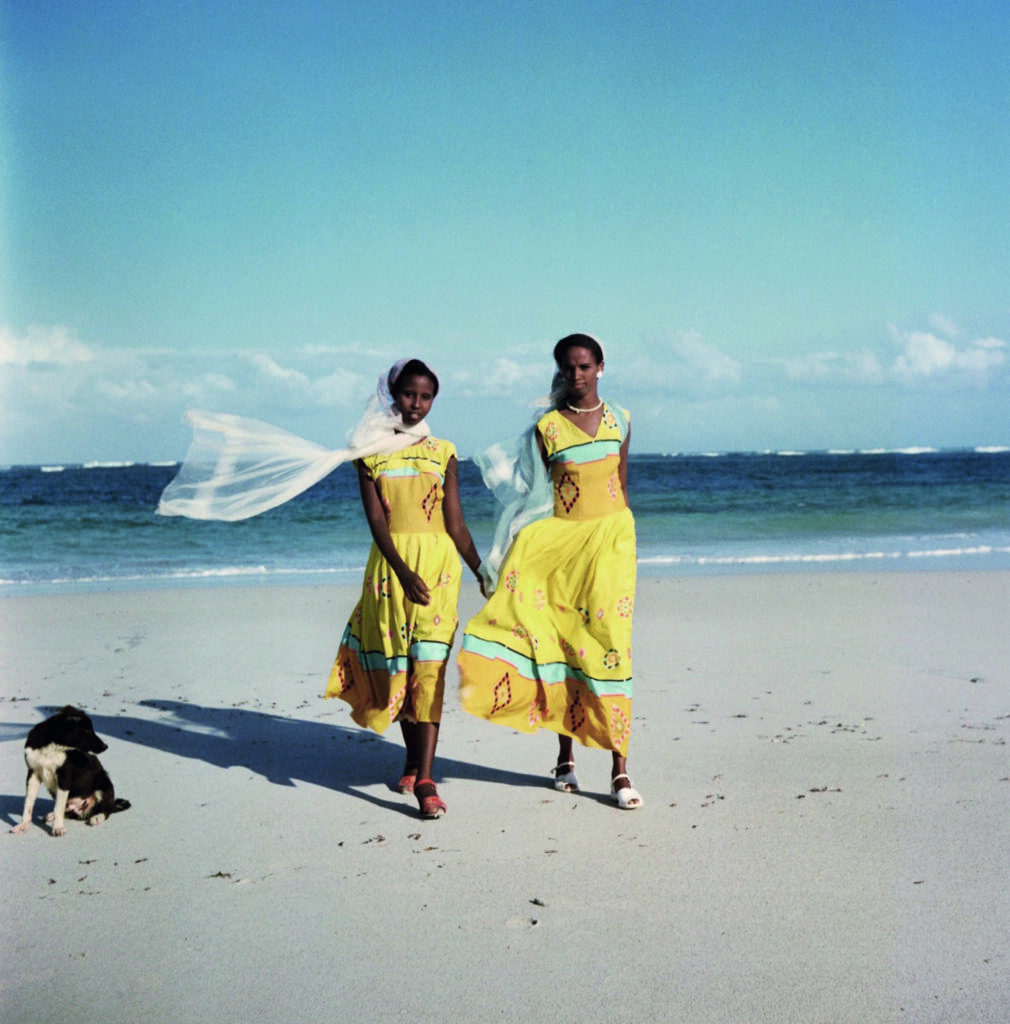
In early 2021, a photograph in marvellous colour became viral on social media. Gen Z, mostly diasporic Africans, were hooked by its timeless appeal. It seemed to us a carefully choreographed Instagrammable shot taken during a throwback summer along the turquoise shores of the Côte d’Azur or the Cyclades. In fact, this was a picture-postcard of the Benadir littoral: two young women are walking on a pristine beach while a mutt, of probable terrier-collie pedigree, sits to their right. The young women, perhaps sisters of Hawiye or Darood lineage, are wearing matching yellow dresses in the popular fashion of mid-century urban Somalia: a style which gave way to the translucent and diaphanous voile of the dirac from risqué French Djibouti in the 1970s and thereafter the uniform of the Arabian-imported jilbaab in the 1990s and beyond. The dresses, with their embroidered patterns, are ostensibly handmade. Their white veils, loosely worn, waft in the midsummer wind of the Indian Ocean as they bask in effortless elegance on il lido di Mogadisco. This is Vogue Africa ante literram.
The photograph of the young women in the yellow dresses are one of several striking images in Todd Webb in Africa: Outside The Frame. Co-authored and curated by professors Aimée Bessire and Erin Hyde Nolan, the book features a collection of 200 hitherto unseen photographs from a UN assignment that took the American photographer Todd Webb (1905–2000) to eight African countries in 1958. The photographs are accompanied by essays from Western and African artists and scholars (some of whom from the countries Webb visited) which frame the images in a critical postcolonial context.
Aimée Bessire and Erin Hyde Nolan, Todd Webb in Africa: Outside the Frame, Thames & Hudson, London, 2021
Webb was no fashion photographer or photojournalist. The erstwhile stockbroker and Quaker-born Midwesterner only discovered photography during the Steinbeckian sojourns of his early 1930s. Neither are his photographs, beautiful and majestic, a mid-century National Geographic redux. As this book shows, Webb upends his UN-commissioned brief to ‘document emerging industries and technologies’. This was too limiting for an artist who could not resist the power of his original oeuvre: to record everyday life and cityscape. And, in an African context gripped in the wind of change, he produced some remarkable results much to the chagrin of his UN patrons. Out of around 1,500 colour negatives which Webb diligently took on three cameras during his five-month assignment, the UN Department of Public Information published only 22 black-and-white images in a seven-page brochure. Those young women in the yellow dresses, and the images of many others, were lost for nearly six decades until their discovery by Betsy Evans Hunt, Webb’s friend and manager of his estate, in a Californian basement in 2015.
The rest of this article is only available to subscribers.
Access our entire archive of 350+ articles from the world's leading writers on Islam.
Only £3.30/month, cancel anytime.
Already subscribed? Log in here.
Not convinced? Read this: why should I subscribe to Critical Muslim?